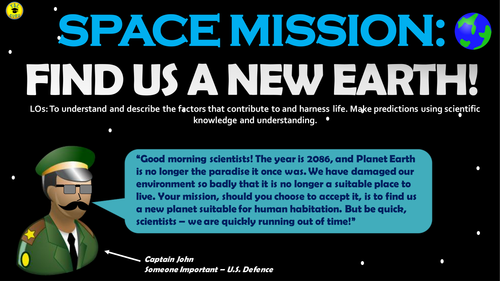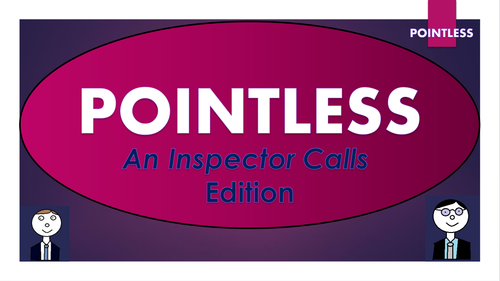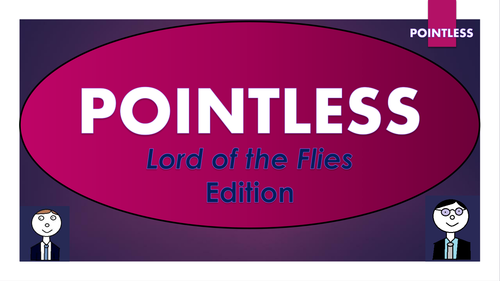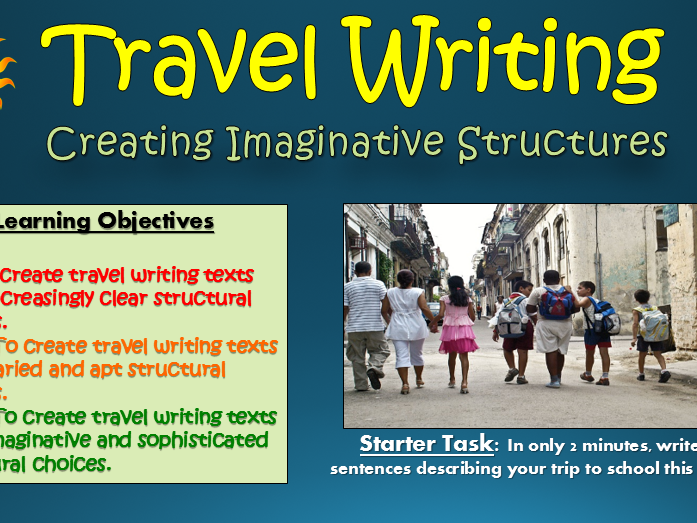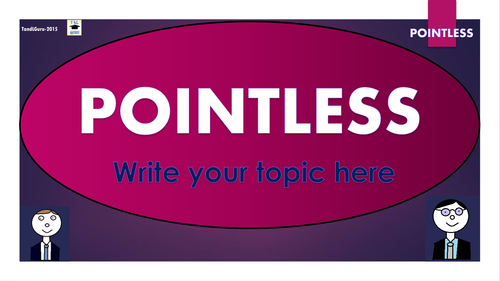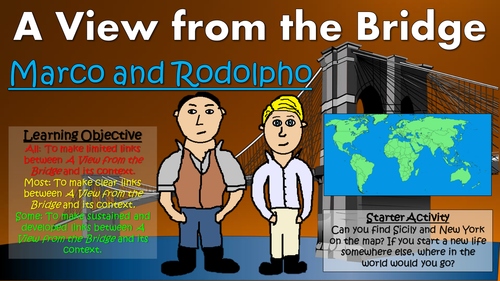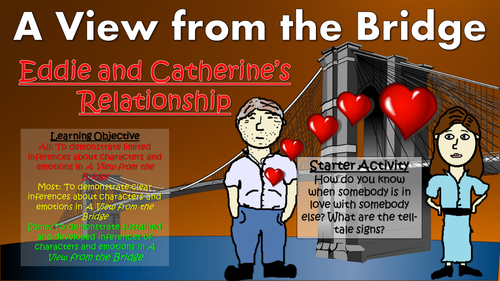
3k+Uploads
1967k+Views
2278k+Downloads
Pedagogy and professional development

Space Mission: Find us a New Earth!
The year is 2086, and the students are needed for a special mission!
This space mission has been designed to provide students with a fun and interesting group challenge, whilst also building key skills in critical thinking and collaboration, and essential knowledge for Science, English, and Mathematics.
Students are placed in a scenario in which Earth is no longer habitable, and humans must seek to move to another planet in the Universe. Compiled for them is information on each of the potentially most habitable planets that are known to man (these are the real planets that have been confirmed by NASA and other agencies as having the most potential for life). In reading the key information, students will be drawing upon their knowledge of Science terminology, and will need to make some Maths calculations to work out implications of living on different planets.
What will become clear fairly quickly is that none of the potential planets are perfect, and they must use reasoned judgements to determine which of them have cons that could perhaps be overcome. They then present their ideas, using clear and articulate speaking and listening skills, and write up their report, using appropriate written communication (a scaffold is provided to frame this).
Everything is provided for you to download, print, and teach:
- A comprehensive, whole-activity PowerPoint that guides the students through the mission;
- Detailed and colourful information sheets on each of the contender planets for being the next Earth (these include links to amazing websites that can provide the children with more information);
- A 'Pros and Cons' scaffold, to help students record their findings;
- An information sheet on the 'habitable zone' around stars;
- A scaffold for writing up findings;
- Sorting cards for help with determining the key features of habitable planets;
- Full teacher guidance.
Considering the time and effort that it took to create these resources, I think that they offer exceptional value. Whenever I have used this activity before, it has taken at least 2-3 lessons, including the introduction, starter challenge, main mission, presentations, and write-up. I originally have used this with mid-ability Year 6,7, and 8 groups, but colleagues have easily adapted it for students across key stages 2-4.
All images have been cited at the end of the PowerPoint presentation and are licensed for commercial use.
Bundle

Writing for Different Forms Huge Bundle!
These engaging, varied, and informative lessons are designed to help students build their skills at writing for a number of different forms, through utilising a range of sophisticated and original language ideas, tasks, and techniques.
Included in this bundle are lessons focusing on:
- Diary Writing;
- Recount Writing;
- Writing Autobiographies;
- Writing Newspaper Articles;
- Writing Reviews;
- Writing to Argue/Persuade;
- Travel Brochure Writing;
- Travel Writing: Constructing Imaginative Content;
- Travel Writing: Crafting Imaginative Language;
- Travel Writing: Creating Imaginative Structures;
Also included are helpsheets for students to use when writing for a wide range of purposes (e.g. inform, explain, etc.)
Stimulating, visual, and easily adaptable, these lessons provide suggested learning objectives and outcomes for students of a wide-range of abilities - The vast majority of tasks are differentiated to allow for different abilities and needs in your classroom. Each lesson loosely follows this logical learning journey to ensure that students learn in bite-size steps:
- Engaging
- Defining/ Understanding
- Identifying/Remembering
- Analysing/ Creating
- Peer or self evaluating.
All of the lessons are interactive, employ a variety of different teaching and learning methods and styles, and are visually-engaging. Resources, worksheets, and lesson plans are all provided - there is everything included that you need to teach!
Bundle

Writing for Different Forms Big Bundle!
These engaging, varied, and informative lessons are designed to help students build their skills at writing for a number of different forms, through utilising a range of sophisticated and original language ideas, tasks, and techniques.
Included in this bundle are lessons focusing on:
- Diary Writing;
- Recount Writing;
- Writing Autobiographies;
- Writing Newspaper Articles;
- Writing Reviews.
Also included are helpsheets for students to use when writing for a wide range of purposes (e.g. inform, explain, etc.)
Stimulating, visual, and easily adaptable, these lessons provide suggested learning objectives and outcomes for students of a wide-range of abilities - The vast majority of tasks are differentiated to allow for different abilities and needs in your classroom. Each lesson loosely follows this logical learning journey to ensure that students learn in bite-size steps:
- Engaging
- Defining/ Understanding
- Identifying/Remembering
- Analysing/ Creating
- Peer or self evaluating.
All of the lessons are interactive, employ a variety of different teaching and learning methods and styles, and are visually-engaging. Resources, worksheets, and lesson plans are all provided - there is everything included that you need to teach!
Bundle

GCSE Poetry Huge Lesson Bundle!
This huge resource pack contains highly stimulating, detailed, and informative whole-lesson resources for 18 different poems - each of the poems feature on the new GCSE poetry lists for the vast majority of examining boards. In addition to this, the lesson on comparing poems is also included - essential for exam technique! The poems included are largely from the Relationships and War/Conflict poetry lists.
Individually, these resources are worth more than double the price of the bundle, meaning that you can make a considerable saving!
Each lesson employs a wide range of teaching and learning strategies, with a large variety of interesting tasks and ideas. This pack contains a whole-lesson PowerPoint presentation for each poem, in addition to all of the worksheets, task resources, and lesson plans that you need to teach.
Bayonet Charge - Ted Hughes
Before You Were Mine - Carol Ann Duffy
Dulce et Decorum est - Wilfred Owen
In Paris with You - James Fenton
Love's Philosophy - Percy Bysshe Shelley
Mametz Wood - Owen Sheers
Mother, Any Distance - Simon Armitage
Neutral Tones - Thomas Hardy
next to of course god america i - E.E. Cummings
Out of the Blue - Simon Armitage
Ozymandias - Percy Bysshe Shelley
Poppies - Jane Weir
Sonnet 116 - William Shakespeare
The Charge of the Light Brigade - Alfred, Lord Tennyson
The Falling Leaves - Margaret Postgate Cole
War Photographer - Carol Ann Duffy
What Were They Like? - Denise Levertov
When We Two Parted - Lord Byron
Comparing Poems!
All images are licensed for commercial use, and are cited on the final slide of the presentations.
Bundle

Recount, Diary, and Autobiographical Writing!
These engaging and detailed resources have been designed to make the learning of Recount, Diary, and Autobiography writing forms easily accessible, engaging and interesting for all children. Throughout each lesson, students learn to improve their skill at using appropriate, concise, and precise spelling, punctuation, and grammar, and practice employing them within their own writing compositions. Each lesson contains a comprehensive whole lesson PowerPoint, all the resources that you will need, and a lesson plan.
The pack also includes a literacy writing mat to help students build their extended writing skills.
All images are licensed for commercial use, and are cited on the final slide of the PowerPoint/ the bottom of worksheets.

An Inspector Calls Pointless Game (and blank template to make your own games!)
Based on the popular game show 'Pointless', this resource is perfect for use as a whole lesson resource, enrichment option, or revision tool. Editable, so that you can change to any other topic or change questions. (I've also added a blank template so that you can make your own games from scratch). Containing almost 30 slides of sound clips, engaging visuals, and suitably challenging questions, this resource is effective at both promoting engagement and enhancing learning. There are several full rounds of questions to build or revisit knowledge of characters, plot, and themes in 'An Inspector Calls.'
Round 1. The characters in An Inspector Calls (takes approx 10 mins)
Round 2. Quotations from the text (takes approx 15 mins)
3. Settings, themes, and objects (takes approx 15 mins)
4. Themes in An Inspector Calls (takes approx 10 mins)
The nature of this game ensures that the resource can challenge students of all levels.
Bundle

A View from the Bridge Lesson Bundle!
This engaging, varied, and informative scheme of learning is designed to help students gain understanding, assessment skills, and key interpretations of Arthur Miller’s play ‘A View from the Bridge.’ Made up of a wide-range of interesting and exciting lessons, students should complete this scheme having gathered vital skills in: interpreting the significant meanings of the text, understanding the writer’s ideas within the text, identifying the traits of key characters, settings, and themes, understanding dramatic and language devices, and relating the text to its social and historical context.
Stimulating, visual, and easily adaptable, these lessons provide suggested learning objectives and outcomes for students of a wide-range of abilities - The vast majority of tasks are differentiated to allow for different abilities and needs in your classroom. Each lesson loosely follows this logical learning journey to ensure that students learn in bite-size steps:
- Engaging
- Defining/ Understanding
- Identifying/Remembering
- Analysing/ Creating
- Peer or self evaluating.
All of the lessons are interactive, employ a variety of different teaching and learning methods and styles, and are visually-engaging. Resources, worksheets, and lesson plans are all provided.

A View from the Bridge: Greek Tragedy - Eddie's Downfall!
This interesting and highly-stimulating lesson students to demonstrate a developed, sustained understanding of the structural features of the Greek Tragedy which are utilised in Arthur Miller’s A View from the Bridge. In particular, students engage analytically with Eddie’s ‘hamartia’ and catastrophic downfall at the end of Act II. Students examine how Eddie’s role as a tragic hero, his fatal flaw, and the sense of fate which runs throughout, mirrors the features of Greek Tragedies.
The lesson follows a clear, logical, bite-size learning journey, which guides students towards differentiated learning objectives. Over the course of this journey, they become able to:
- Define and identify the features of Greek Tragedies;
- Understand Miller's views towards Greek Tragedies, and his intentions for writing the play in this form;
- Identify the features of Greek Tragedy in A View from the Bridge;
- Critically engage with text as a Greek Tragedy, considering how Eddie's downfall is constructed by his fatal flaws, hamartia, and catastrophe;
-Peer assess each other's learning attempts.
This resource pack includes:
- A visually engaging whole-lesson PowerPoint presentation;;
- Paper copies and online links to the extract needed for the lesson (end section of Act Two);
- Greek Myths Definitions Cards;
- Greek Myths worksheet (including answer sheet for teachers);
- A logically scaffolded essay template;
- A detailed lesson plan, complete with what the teacher and students should aim to achieve at each stage of the lesson.
All images are licensed for commercial use, and are cited on the final slide of the PowerPoint.

A View from the Bridge: Miller's Language Devices!
This interesting and highly-stimulating lesson enables students to demonstrate a developed, sustained understanding of the language devices utilised in Arthur Miller’s A View from the Bridge. In particular, students engage analytically with Miller’s use of language at the beginning of Act II, in which Eddie Carbone appears to lose control over his actions. Students examine how similes, rhetorical questions, imperative commands, and other language features serve to highlight his descent into desperation.
The lesson follows a clear, logical, bite-size learning journey, which guides students towards differentiated learning objectives. Over the course of this journey, they become able to:
- Define and provide examples for each of the relevant language devices;
- Identify each of the language devices in short sentences, and begin to comment upon their effect;
- Understand some of Miller's intentions behind writing the play;
- Critically engage with Miller's use of language devices at the end of the Act Two, including the events leading up to Eddie's call to the Immigration Office;
-Peer assess each other's learning attempts.
This resource pack includes:
- A visually engaging whole-lesson PowerPoint presentation;;
- Paper copies and online links to the extract needed for the lesson (beginning section of Act Two);
- Language Devices Cards;
- Language Devices worksheet (including answer sheet for teachers);
- A logically scaffolded essay template;
- A detailed lesson plan, complete with what the teacher and students should aim to achieve at each stage of the lesson.
All images are licensed for commercial use, and are cited on the final slide of the PowerPoint.
Bundle

Travel Writing Lesson Bundle!
These engaging and detailed resources have been designed to make the teaching and learning of Travel Writing exciting, interesting, and easily accessible for all children. Throughout each lesson, students consider a different element of their writing (content, language, and structure) in order to produce imaginative and appropriate travel writing texts. Each lesson contains a comprehensive whole lesson PowerPoint, all the resources that you will need, and a lesson plan.
Included are the following lessons:
1. Travel Writing: Crafting Imaginative Content
2. Travel Writing: Constructing Imaginative Language;
3. Travel Writing: Creating Imaginative Structures
All images are licensed for commercial use, and are cited on the final slide of the PowerPoint/ the bottom of worksheets.

Lord of the Flies Pointless Game! (and blank template to make your own games!)
Based on the popular game show 'Pointless', this resource is perfect for use as a whole lesson resource, enrichment option, or revision tool. Editable, so that you can change to any other topic or change questions. (I've also added a blank template so that you can make your own games from scratch). Containing almost 30 slides of sound clips, engaging visuals, and suitably challenging questions, this resource is effective at both promoting engagement and enhancing learning. There are several full rounds of questions to build or revisit knowledge of characters, plot, and themes in 'Lord of the Flies:'
Round 1. The characters in Lord of the Flies (takes approx 10 mins)
Round 2. Quotations from the text (takes approx 15 mins)
3. Settings, themes, and objects (takes approx 15 mins)
4. Themes in Lord of the Flies (takes approx 10 mins)
The nature of this game ensures that the resource can challenge students of all levels.

Travel Writing: Creating Imaginative Structures!
This stimulating and thought-provoking lesson enables students to create travel writing texts containing varied and imaginative structures, utilising strategies at both sentence level and whole-text level in order to add creativity and depth to their extended travel writing attempts. In particular, students learn how the subtle variation of sentence and paragraph order, in addition to a range of appropriate connectives, can help to create truly authentic and descriptive travel writing pieces.
The lesson follows a clear, logical, bite-size learning journey, which guides students towards differentiated learning objectives. Over the course of this journey, they become able to:
- Define and identify the words that make up sentences;
- Knowingly alter the structure and order of sentences, for effect;
- Apply this knowledge to travel writing contexts;
- Analyse model examples of travel paragraph/ whole text structures in travel writing;
- Write their own travel writing pieces, with varied and imaginative structures;
- Self/Peer assess travel writing attempts.
This resource pack includes:
- A visually engaging whole-lesson PowerPoint presentation;
- An logical, piece-by-piece writing plan, that enables students to build interesting whole-text and sentence level structures;
- A detailed lesson plan, complete with what the teacher and students should aim to achieve at each stage of the lesson.
All images are licensed for commercial use, and are cited on the final slide of the PowerPoint.

A View from the Bridge: The Lifting of the Chair Scene! (Exploring Miller's dramatic devices)
This interesting and highly-stimulating lesson enables students to demonstrate a developed, sustained understanding of the dramatic devices utilised in the ‘lifting of the chair’ scene in Arthur Miller’s A View from the Bridge. In particular, students engage analytically with Miller’s use of atmosphere, dramatic tension, dramatic irony, and stage directions throughout the scene.
The lesson follows a clear, logical, bite-size learning journey, which guides students towards differentiated learning objectives. Over the course of this journey, they become able to:
- Understand the key term 'masculinity' and how it affects the behaviour of different characters;
- Read and understand the chair-lifting scene at the end of Act One, making key interpretations and inferences;
- Define and understand the dramatic devices: dramatic devices, dramatic irony, atmosphere, and stage directions.
- Critically engage with Miller's use of dramatic devices at the end of the Act One, including the events leading up to the chair lifting section.
-Peer assess each other's learning attempts.
This resource pack includes:
- A visually engaging whole-lesson PowerPoint presentation;;
- Paper copies and online links to the extract needed for the lesson (end section of Act One);
- Dramatic Devices Cards;
- Dramatic Devices worksheet (including answer sheet for teachers);
- A logically scaffolded essay template;
- A detailed lesson plan, complete with what the teacher and students should aim to achieve at each stage of the lesson.
All images are licensed for commercial use, and are cited on the final slide of the PowerPoint.

A View from the Bridge Pointless Game! (and blank template to make your own games!)
Based on the popular game show 'Pointless', this resource is perfect for use as a whole lesson resource, enrichment option, or revision tool. Editable, so that you can change to any other topic or change questions. (I've also added a blank template so that you can make your own games from scratch). Containing almost 30 slides of sound clips, engaging visuals, and suitably challenging questions, this resource is effective at both promoting engagement and enhancing learning. There are several full rounds of questions to build or revisit knowledge of characters, plot, and themes in A View from the Bridge:
Round 1. The characters in A View from the Bridge (takes approx 10 mins)
Round 2. Quotations from the text (takes approx 15 mins)
3. Settings, themes, and objects (takes approx 15 mins)
4. Themes in A View from the Bridge (takes approx 10 mins)
The nature of this game ensures that the resource can challenge students of all levels.

A View from the Bridge - Marco and Rodolpho (The Context of Italian Immigration)
This interesting and highly stimulating lesson enables students to make clear and sustained links between Arthur Miller’s A View from the Bridge and the social and historical context of Italian American immigration in the early to mid-twentieth century. In particular, students engage analytically with Marco and Rodolpho’s arrival at the Carbone household, interpreting their key quotations about life in both Italy and America, and linking these to knowledge of real-life context.
The lesson follows a clear, logical, bite-size learning journey, which guides students towards differentiated learning objectives. Over the course of this journey, they become able to:
- Understand the key features of Italian immigration to America in the early to mid-twentieth century;
- Understand the relevance of Arthur Miller's life and influences upon elements of plot;
- Create a timeline detailing contextual information regarding Italian immigration;
- Read and understand the middle section of Act One, interpreting quotations which Marco and Rodolpho arrive and offer key information about life in Italy, and their hopes for America;
- Understand cultural differences that lead to Eddie's unease with Rodolpho;
- Make clear and sustained links between the text and its social and historical context, by analysing the middle of Act One;
-Peer assess each other's learning attempts.
This resource pack includes:
- A visually engaging whole-lesson PowerPoint presentation;;
- Paper copies and online links to the extract needed for the lesson (mid-section of Act One);
- Timeline template;
- Linking to context worksheet (including answer sheet for teachers);
- A logically scaffolded essay template;
- A detailed lesson plan, complete with what the teacher and students should aim to achieve at each stage of the lesson.
All images are licensed for commercial use, and are cited on the final slide of the PowerPoint.

A View from the Bridge: Eddie and Catherine's Relationship
This interesting and highly-stimulating enables students to make clear and sustained inferences regarding the main characters and their relationships in Arthur Miller’s A View from the Bridge. In particular, students read between the lines in decoding the subtle cues suggestive of Eddie’s feelings towards Catherine in the opening stages of Act I.
The lesson follows a clear, logical, bite-size learning journey, which guides students towards differentiated learning objectives. Over the course of this journey, they become able to:
- Understand the key learning skill of inference;
-Infer key meanings from short extracts of texts;
- Read and understand the opening section of Act I, in which we are introduced to the Carbone family, and infer and interpret the key information provided regarding their relationships;
- Demonstrate an understanding of Eddie's hidden feelings for Catherine, and Beatrice's knowledge of this;
- Write an emotive diary entry from Beatrice's viewpoint, using evidence from the text to demonstrate an understanding the key meanings from the act;
-Peer assess each other's learning attempts.
This resource pack includes:
- A visually engaging whole-lesson PowerPoint presentation;;
- Paper copies and online links to the extract needed for the lesson (Beginning of Act I);
- Inferences worksheet (including answer sheet for teachers);
- A detailed lesson plan, complete with what the teacher and students should aim to achieve at each stage of the lesson.
All images are licensed for commercial use, and are cited on the final slide of the PowerPoint.

Similes and Metaphors in Popular Music!
This interesting and highly stimulating lesson enables students to demonstrate a developed and sustained understanding of the effect of figurative language in popular music texts. In particular, students learn to explore the meanings behind similes and metaphors across songs from a range of genres, considering the effect upon the whole text and the intended audience. As one would expect, Students love learning about similes and metaphors through popular music, and this lesson can really help to open students' eyes to how language can be crafted for effect. This has numerous benefits in later poetry and descriptive writing lessons.
The lesson follows a clear, logical, bite-size learning journey, which guides students towards differentiated learning objectives. Over the course of this journey, they become able to:
- Define and identify similes and metaphors;
- Explain the similarities and differences between songs and poetry;
- Observe and listen to several examples of similes and metaphors in popular music examples;
- Understand and analyse the effect of similes and metaphors upon meanings and the reader;
- Apply their knowledge of why similes and metaphors are used to a range of contexts and musical genres;
- Collaborate and present their key findings about similes and metaphors in songs to their classmates;
- Self-assess their learning attempts.
This resource pack includes:
- A visually engaging whole-lesson PowerPoint presentation;
- Link to an online compilation video of similes and metaphors in popular music;
- 3 x lyrics analysis worksheets of varying difficulties (Katy Perry, Train, and Florence and the Machine - all clean)
- A detailed lesson plan, complete with what the teacher and students should aim to achieve at each stage of the lesson.
All images are licensed for commercial use, and are cited on the final slide of the PowerPoint.

Critical Thinking in English: Strategies, Resources, and CPD Materials!
These stimulating and varied resources, strategies, and ideas have been designed to aid educators in equipping young people with vital critical thinking skills through the learning of English.
In a rapidly changing and ever-more competitive world, it is of the utmost importance that children leave school with the learning skills and mindsets needed to take on wide-ranging challenges and obstacles. Learning to think critically can enable them to become rational, reflective, and resourceful learners, who are able to comprehend information beyond the 'surface' or 'initial' level. These skills of tackling misconceptions and given truths, and critically analysing and evaluating what they are presented with, can also be of vital importance in developing a deep understanding of English concepts.
Grounded in education research, the initial section of this pack contains a number of resources that will be of use to CPD leaders, including links to clear explanatory videos and theory. The second section of the resource pack contains strategies, ideas, and resources for teachers looking to build English skills in critical thinking through the key areas of comprehension, SPAG, and vocabulary.
All images and videos are licensed for commercial use, and where necessary are cited on the final slide of the PowerPoint presentation.

A View from the Bridge: Context of Italian American Brooklyn
This interesting and highly-stimulating lesson enables students to make clear and sustained inferences and interpretations about the context and themes in Arthur Miller’s A View from the Bridge. In particular, students engage analytically with Alfieri’s opening monologue, demonstrating an understanding of what it reveals about Italian American culture and community at the time.
The lesson follows a clear, logical, bite-size learning journey, which guides students towards differentiated learning objectives. Over the course of this journey, they become able to:
- Understand the relevance of Brooklyn Bridge, both literally and figuratively;
- Understand the relevance of Arthur Miller's life and influences;
- Read and understand Alfieri's opening monologue, in which the geographical, social, and historical context is set, and infer and interpret the key information provided;
- Understand the key term 'Omerta', and apply codes of honour to their own contexts;
- Analyse Alfieri's opening monologue in terms of the key information it provides the audience with about context and community;
-Peer assess each other's learning attempts.
This resource pack includes:
- A visually engaging whole-lesson PowerPoint presentation;;
- Paper copies and online links to the extract needed for the lesson (Alfieri's opening monologue);
- Cards for application activity;
- Interpretations and inferences worksheet (including answer sheet for teachers);
- A logically scaffolded essay template;
- A detailed lesson plan, complete with what the teacher and students should aim to achieve at each stage of the lesson.
All images are licensed for commercial use, and are cited on the final slide of the PowerPoint.
Bundle

Lord of the Flies Huge Bundle!
This bundle contains all of the Lord of the Flies lessons, the comprehension activities booklet, the knowledge organiser and the Pointless game!
These engaging, varied, and informative lessons have been designed to help students gain a valuable understanding of the plot, characters, language, and key messages in William Golding’s novel ‘Lord of the Flies.’ The lessons enable students to gain a comprehensive understanding of the key features of content, language, and structure, in addition to considering Golding’s key intentions in writing the novel.
All of the resources that you need to teach are included in the bundle: Whole lesson step-by-step PowerPoint presentations, informative and engaging , worksheets, activities, and lesson plans.
Contained in the bundle are lessons based on:
- 1. Savagery vs Civilization;
- 2. Ralph, Jack, and Piggy;
- 3. Golding’s Language Devices;
- 4. The Beast
- 5. Simon and Roger
- 6. The Ending
Plus the 30-page comprehension booklet, the knowledge organiser and the Lord of the Flies Pointless Game!
Stimulating, visual, and easily adaptable, these lessons provide suggested learning objectives and outcomes for students of a wide-range of abilities - The vast majority of tasks are differentiated to allow for different abilities and needs in your classroom. Each lesson loosely follows this logical learning journey to ensure that students learn in bite-size steps:
- Engaging
- Defining/ Understanding
- Identifying/Remembering
- Analysing/ Creating
- Peer or self evaluating.
All of the lessons are interactive, employ a variety of different teaching and learning methods and styles, and are visually-engaging.

